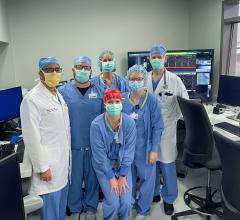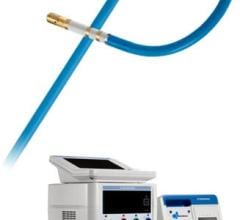
May 8, 2018 — Biosense Webster Inc. announced its Carto Vizigo Bi-directional Guiding Sheath is now available in the United States. According to the company, this is the first commercially available steerable guiding sheath that can be visualized on the Carto 3 System during a catheter ablation procedure, helping electrophysiologists (EPs) reduce dependency on fluoroscopy.
A sheath is an introducer routinely used by EPs to facilitate catheter access, stability and tissue contact when targeting sites for catheter ablation to treat conditions such as atrial fibrillation. Many EPs rely on fluoroscopy to identify the location of the sheath, therefore requiring use of lead to protect themselves from radiation during the procedure. Research shows up to 62 percent of medical staff suffer chronic musculoskeletal pain from wearing these heavy protective garments.[1] Additionally, patients are exposed to a radiation dose equivalent to 830 chest X-rays during a conventional radiofrequency (RF) ablation procedure.[2]
Carto Vizigo can be visualized on the Carto 3 System map during an ablation procedure, eliminating sole dependence on fluoroscopy to determine its location. It was recently used on a patient at Massachusetts General Hospital (MGH) in Boston.
"We are always looking for ways to improve the care we deliver to our patients," said Moussa Mansour, M.D., director of the atrial fibrillation program at MGH. "One of our overall goals is to reduce dependency on fluoroscopy and gain more directional control and awareness during procedures."
Sheath visualization is incorporated easily into the EP's workflow, designed to enhance efficiency during mapping and positioning of the ablation catheter. The smooth tip-to-dilator transition promotes ease of entry into the left atrium during transseptal access, while deflections of 180 degrees in both directions mean increased steerability, which may improve access to hard-to-reach sites.
For more information: www.biosensewebster.com
References:


 October 30, 2024
October 30, 2024 








